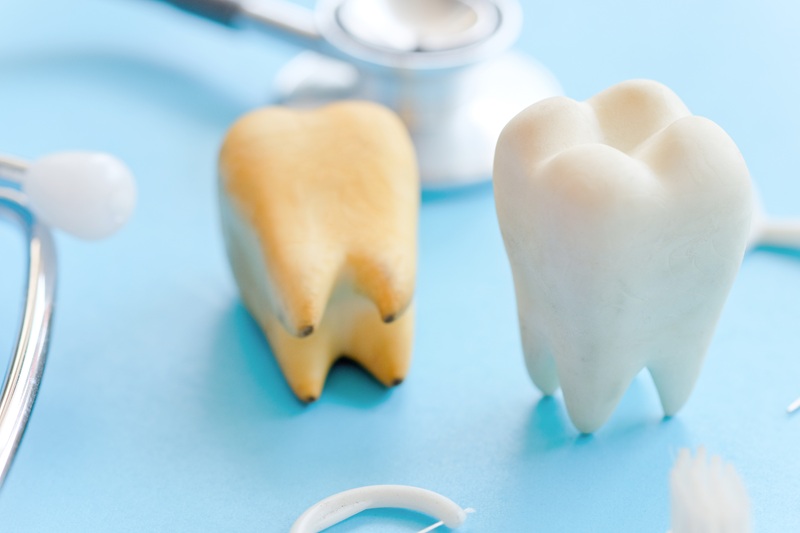How Many Molars Do We Have?

Let’s face it: most people nowadays see teeth as another factor to judge our overall appearance, but teeth are not just there for show. Before it became a consideration for beauty standards, our teeth played a crucial role in helping us chew and digest food properly—and the most important among them are the ones responsible for grinding and breaking down food before swallowing. These are our molars.
But are you aware of how many molars we have and when they come in?
What Is Molar Teeth?
Molars are large, flat teeth located at the back of your mouth. They are designed specifically for chewing, crushing, and grinding food into smaller pieces, making it easier for digestion. Compared to other teeth, molars have a broader, flatter surface, which helps them handle tougher foods like vegetables, grains, and meats.
In total, an adult has 12 molars—three in each quadrant of the mouth (upper left, upper right, lower left, and lower right). These include the first molars, second molars, and third molars, which are also known as wisdom teeth.
Do children and adults have different numbers of teeth?
Yes, they do. Our teeth change as we grow, including the number of teeth we have from when we were children to adults:
- Children have a total of 20 baby teeth, which eventually fall out to make way for permanent teeth.
- Adults typically have 32 teeth, including wisdom teeth. However, if wisdom teeth are removed, adults may have 28 teeth instead.
When Do You Get Your Molar Teeth?
Many people may not know this, but molars develop in different stages of life, starting from early childhood and continuing into young adulthood. The first and second molars emerge naturally without replacing any baby teeth. This means that starting around age six, children will begin having a mix of baby teeth and permanent molars as their adult dentition develops.
Here’s when you can expect molars to grow:
First Molars (grows when we’re 6 years old)
The first molars emerge around the age of six. Unlike baby teeth, these molars do not replace any existing teeth. Instead, they grow directly behind the last baby molars, helping to establish the foundation for adult dentition.
Second Molars (grows when we’re 12 years old)
Around the age of 12, the second set of molars erupts. These also grow behind the first molars, expanding the back teeth further to aid in chewing and grinding food.
Third Molars (Wisdom Teeth)
The third molars, commonly known as wisdom teeth, typically develop between the ages of 18 and 21. However, not everyone has enough space in their mouth for wisdom teeth, and in many cases, they may need a wisdom teeth removal to prevent overcrowding or discomfort.
What to Expect When Molars Start to Come Out
Teething can be a challenging process, especially for young children getting their first set of molars. Unlike front teeth, molars have a larger surface area and require more effort to break through the gums. This can cause discomfort, swelling, and irritation.
Signs of Molar Teething:
- Increased drooling
- Irritability or fussiness
- Swollen or tender gums
- Difficulty eating or chewing
- Mild sleep disturbances
To help ease discomfort, parents can provide teething toys, chilled (not frozen) foods, or gently massage their child’s gums. If severe pain persists, consulting a dentist can help determine the best course of action.
The Role of Molars in Digestion
Molars are the most vital tooth in the digestive process—this is even more true when we go back millions of years ago when our ancestors were not as strict in their diet as we are now. Throughout human evolution, our molars have undergone significant changes in size, shape, and function, which also reflect the shifts in our diet and lifestyle. Early human ancestors had larger molars with thick enamel, adapted for processing tough, fibrous plant materials.
As tool use and cooking became prevalent, diets softened, leading to a reduction in molar size and jaw structure. Because of this, the evolutionary trend has resulted in the smaller molars and jaws seen in modern humans.
Today, as our diets soften and our molar sizes have reduced, our molars’ purpose has never changed. Whilst the front teeth (incisors and canines) are designed for slicing and tearing food, molars still work by grinding and breaking it down into smaller, digestible pieces. This helps prepare food for swallowing and makes it easier for the stomach to process nutrients.
And because molars bear the brunt of chewing, they are more susceptible to wear, decay, and cavities. That’s why practising good oral hygiene, such as regular brushing, using interdental brushes, and dental check-ups, helps ensure that molars stay healthy and functional for many years.
Strong Molars, Healthy Smiles
Now that we have learned how many molars we have and their importance in helping us digest the food we eat, it’s also important that we know how to take care of them to enjoy them for a longer time. As they help us break down our food and nourish our bodies, let’s take an effort to support their maintenance by brushing them with fluoride toothpaste, using interdental brushes to clean between the teeth, and keeping them plaque and bacteria-free by going to the dentist for a cleaning.
If you or your child are experiencing molar teething discomfort or have concerns about your molars, visiting a trusted dentist can provide the right guidance and care. Partner with our experienced and skilled dentists at Whitehorse Dental in Blackburn, VIC. Our team provides professional, compassionate care for patients of all ages. Book an appointment today and ensure your smile stays healthy for years to come!




